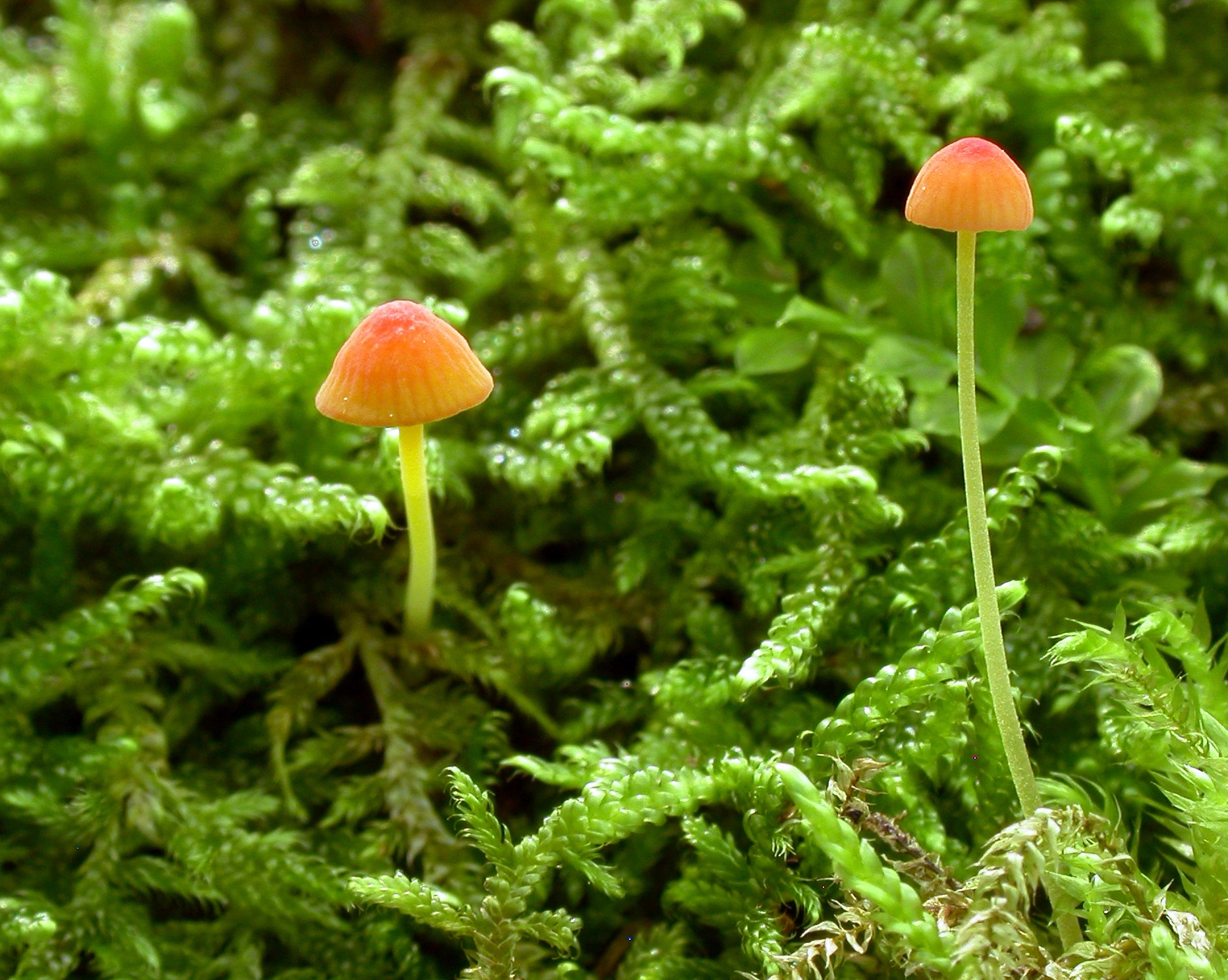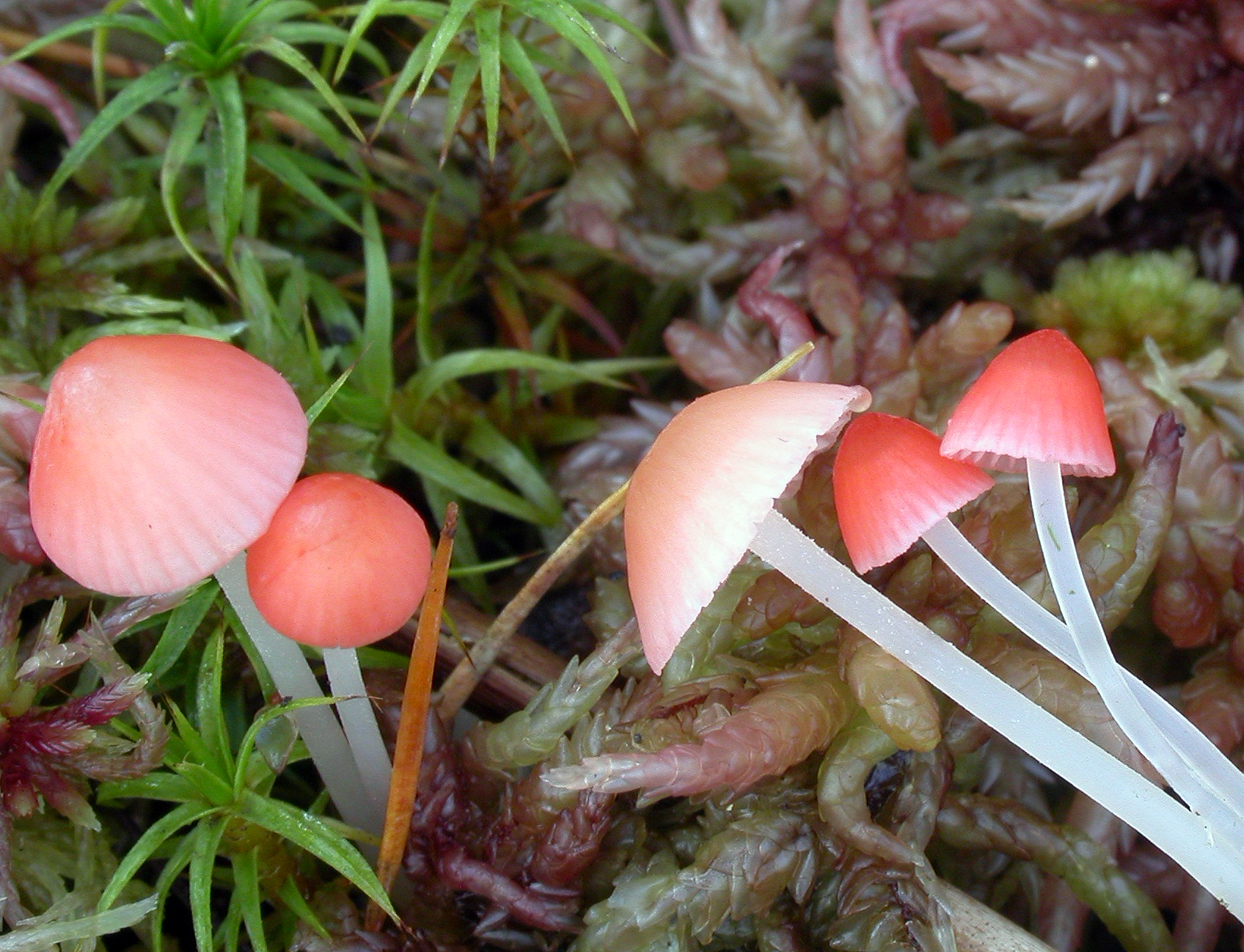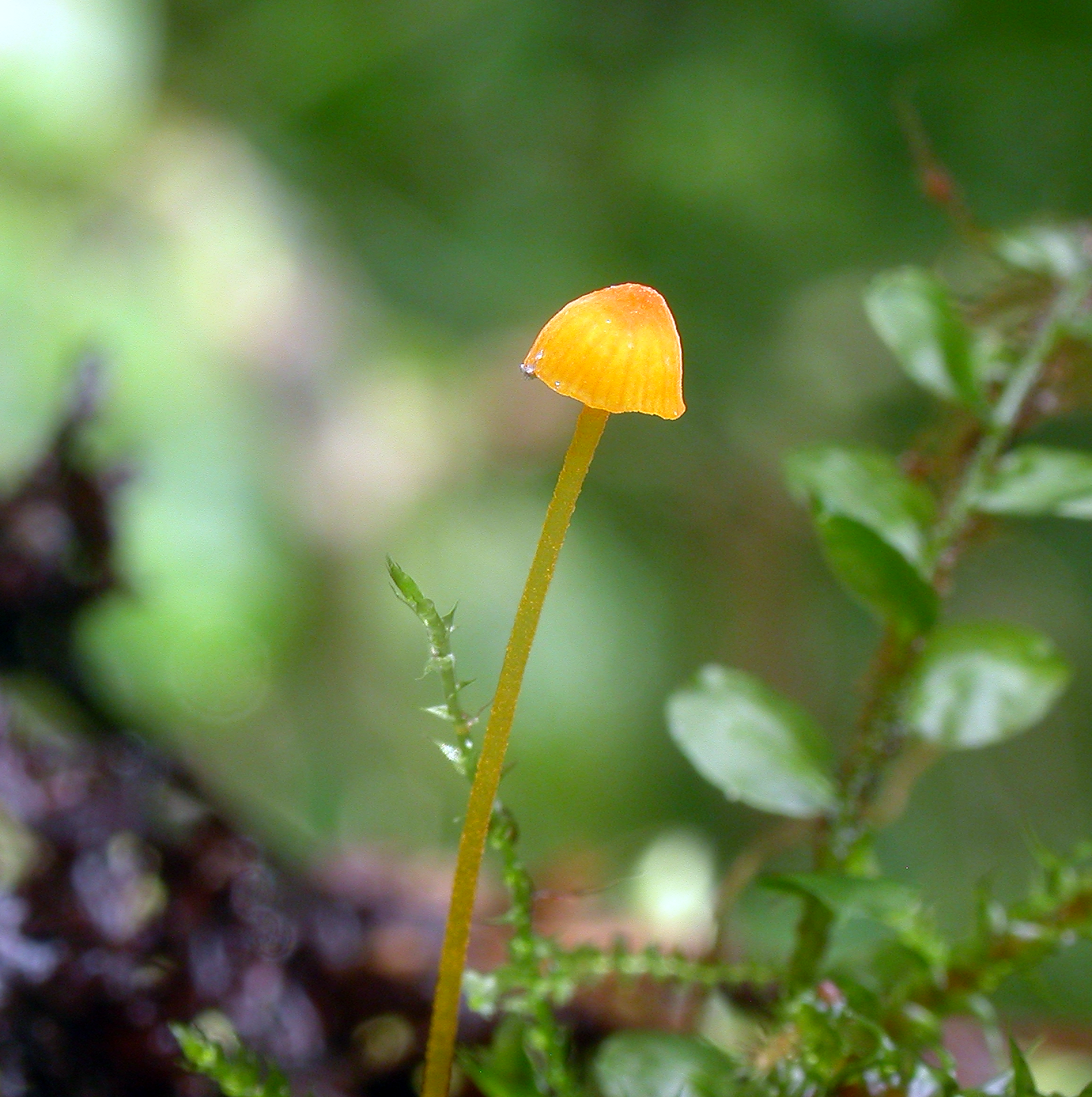Mycena acicula
Mycena acicula
Description
Hyphae of the pileipellis, cheilocystidia, spores, basidium, and hyphae of the cortical layer of the stem.
Cap 2-6 (- 8) mm across, hemispherical, broadly conical to parabolical, shallowly sulcate, translucent-striate, deep orange-red, fading to orange or more yellowish. Gills 9-16 reaching the stem, ascending, adnexed to adnate, orange-yellow to whitish. Stem 20-35 x 0.3-0.5(-1) mm, straight to flexuous, entirely pruinose, orange-yellow to yellow, paler at the apex, the base covered with long, flexuous, white fibrils, at times somewhat rooting. Odour indistinctive. Basidia 19-24 x 6-7 µm, clavate, 4-spored. Spores 8.5-11 x 3.5-5 µm, Q = 2.4-3.1, narrowly pip-shaped, non-amyloid. Cheilocystidia 15-25 x 5-9 µm, mixed with basidia, but partly forming a sterile band, clavate, fusiform, lageniform or subcylindrical, smooth. Pleurocystidia similar. Lamellar trama non-dextrinoid. Hyphae of the pileipellis 1.5-3.5 µm wide, covered with simple, cylindrical excrescences 2-9 x 1-3 µm. Hyphae of the cortical layer of the stem 2- 4.5 µm wide, covered with simple to somewhat branched, cylindrical to inflated excrescences 2-22 x 1-5 µm, embedded in gelatinous matter. Clamp connections present in all tissues.
Ecology and distribution
On fallen twigs, plant debris, and decayed bark and wood of deciduous trees, mostly in humid places, .e.g. deep in neetle beds, early summer to late autumn. Often together with M. speirea. Common all over the country but much more rare in boreal and alpine zones.



